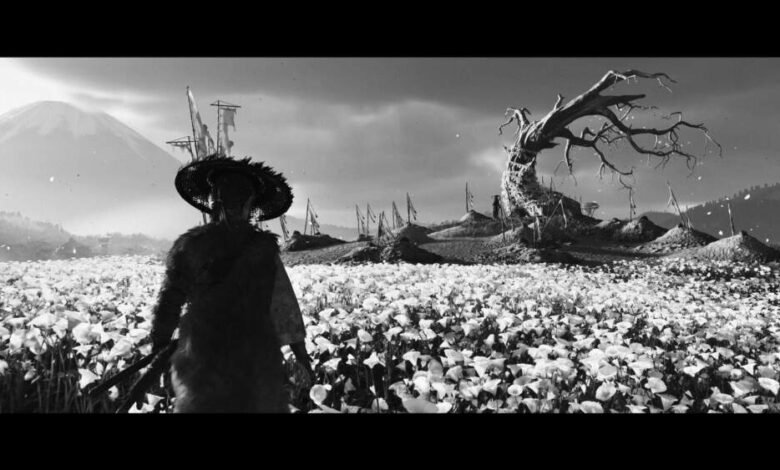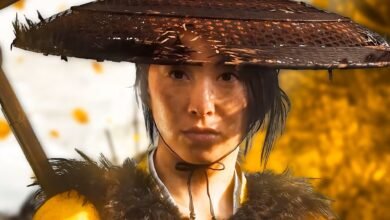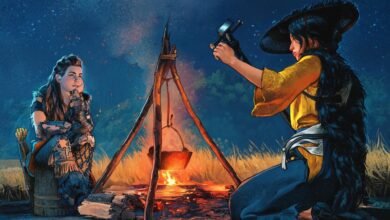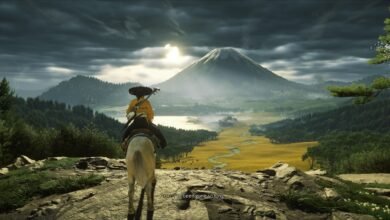‘Ghost of Yotei’: A Cinematic Video Game Masterpiece

▼ Summary
– “Ghost of Yotei” is a PlayStation sequel set in 1600s Hokkaido where players control a vengeful mercenary.
– The game features optional visual and audio modes inspired by three Japanese film directors: Akira Kurosawa, Takashi Miike, and Shinichirō Watanabe.
– Kurosawa mode presents the game in black-and-white with accentuated environmental movement to emulate his classic samurai film style.
– Miike’s mode creates more intimate, grittier combat inspired by “13 Assassins,” while Watanabe’s mode replaces the score with lo-fi beats.
– The developers ensured cultural accuracy by consulting Japanese experts and indigenous Ainu advisors throughout production.
Stepping into the wild, untamed beauty of 1600s Hokkaido, “Ghost of Yotei” invites players to embody a mercenary driven by vengeance. This highly anticipated sequel to “Ghost of Tsushima” from Sucker Punch Productions launches with a groundbreaking feature: optional cinematic modes that transform the game’s visual and auditory experience, each one a tribute to a legendary Japanese filmmaker.
One of these modes is a direct homage to the iconic director Akira Kurosawa. Jason Connell, the creative director at Sucker Punch, explained that this setting does far more than simply drain the color from the screen. “It really tries to embody some of those earlier films,” he said. The mode introduces a grainy, black-and-white aesthetic where environmental elements are intensified. “There’s always movement in the frames, like wind and rain and hair and cloth,” Connell noted. “So there’s an accelerated and accentuated amount of wind inside this mode, and it tries to pay homage to this classical samurai cinematographer.”
The development team also partnered with two celebrated contemporary directors. They collaborated with Takashi Miike, known for historical epics like “13 Assassins,” and Shinichirō Watanabe, the visionary behind anime classics such as “Cowboy Bebop” and “Samurai Champloo.” Connell believes this allows players to connect with the game on a different level. “People can come in and say, ‘Hey, I’ve seen some of these films when I was a kid,’ or maybe ‘I love these films,'” he said. “You can play the game through that lens, and it sort of changes the experience.”
In a deeper discussion, Connell elaborated on what each director’s mode brings to the game. The Takashi Miike mode draws heavy inspiration from the relentless action of “13 Assassins,” particularly its climactic 40-minute battle sequence. “As a video game, you’re looking for classy ways to bring combat a fresh take,” Connell stated. This mode pulls the camera closer during fights, creating a more visceral and personal encounter. “It gets a little bit muddier, and it’s a little bit bloodier. It feels very personal, and that story deserves that.”
When asked if this intimate approach could be perceived as excessively gory, Connell emphasized the team’s commitment to balance. “We actually started this on the very beginnings of making this samurai game. We weren’t trying to have heads roll all over the place,” he clarified. The goal was to treat serious themes like war and vengeance with gravity, not to create something grotesque. “It’s not trying to be over the top. And that is an important distinction.”
The Shinichirō Watanabe mode offers a completely different alteration, focusing entirely on the soundtrack. Connell described Watanabe as a “legendary filmmaker” who pioneered blending samurai themes with lo-fi beats in “Samurai Champloo.” This innovative sound left a lasting impression. The team noticed that fans of the first game were creating videos set to lo-fi music, which directly inspired this collaboration. They asked Watanabe to create several new tracks and remixes for the score. While some players will prefer the original orchestral music, Connell is excited for the fans who will appreciate this unique audio option.
The game’s main score, composed by Toma Otowa, is primarily built on traditional Japanese instrumentation but incorporates subtle Western influences. Connell confirmed you can hear it “with a stringed instrument and sometimes with a way that a melody might play.” This musical choice helps capture the unique essence of Hokkaido, a wild and distinct frontier known historically as Ezo.
Given that Sucker Punch is an American studio creating a game deeply rooted in Japanese history, a critical question of cultural sensitivity arises. Connell addressed this by detailing the studio’s long-term commitment. After a decade of developing games set in Japan, they recognized the need to expand their team beyond traditional game development roles. For “Ghost of Yotei,” they enlisted a wide range of cultural experts. “Suddenly, we found ourselves surrounded by Japanese religion experts and mannerism advisors,” Connell said. This extended to consulting with the Ainu, the indigenous people of Hokkaido, to ensure the final game is both thoughtful and respectful.
(Source: WBUR)





